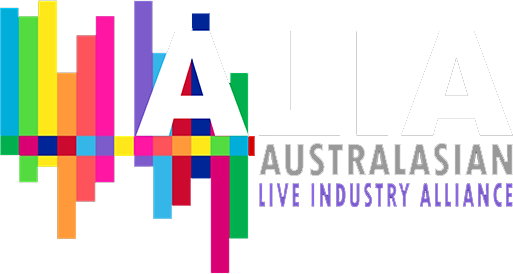



 Shakespeare’s tragedy Julius Caesar is realised in its entirety by three outstanding performers: Geraldine Hakewill, Ewan Leslie and Zahra Newman.
Shakespeare’s tragedy Julius Caesar is realised in its entirety by three outstanding performers: Geraldine Hakewill, Ewan Leslie and Zahra Newman.
The play has been reconceived by STC’s Artistic Director Kip Williams and is staged in a new format for The Wharf, with Julius Caesar being performed in the round with the audience able to experience the production from all angles.
The production uses live video and screens and brings new life to Shakespeare’s most celebrated history play.
As the show is staged in the round on a white platform with a 2.7m x 3.1m LED screen rigged in a cube configuration above the stage, the biggest challenge for lighting designer Amelia Lever-Davidson was lighting around (and within) the cube of screens.
The cube was sealed from above and was flown on Kinesys motors throughout the show. The cube needed to store a number of costumes, props, set items and on occasion, seal the performer inside it. This meant that space was at a premium inside the cube and any lighting fixture inside needed to be flexible and take up as little real estate as possible.
“We chose to install six GLP X4 Bar 20s inside the cube to travel with the screens as they moved,” explained Amelia. “There was also a ‘no go’ rigging position of one metre around the screen for standard theatre lamps so the viewing angle to the screen wouldn’t be blocked. As a result, we chose GLP X4 Bar 10 around the outside perimeter of the cube. The GLP X4 units gave us the most flexibility in a fixture (pan, tilt, zoom, colour) and the linear shape of the fixture worked well with the shape of the set design.”
Lighting in the round usually presents a number of challenges in the ability to craft a dynamic stage image when the performer needs to be lit from four sides. One of the biggest challenges the design presented was the stage being raised and the large cube suspended in the centre of the space. This left a very limited shot for much of the lighting mostly through only a tight 3m aperture as well as limiting the overhead positions.
“Many of the lighting shots I tend to gravitate towards when lighting in the round were largely unavailable, so the show required a significant reimaging around how to create a lighting design that could still provide as much visual contrast as possible and avoid the usual in the round blandness,” said Amelia. “To make the best use of the limited rigging real estate and to be able to continually dodge the flying cube, the best (or only!) option was to opt for a lighting rig consisting of a mostly LED technology including ETC S4 Lustr II, GLP X4 Bars and Martin Encore Performance CLD. But I was very happy that I was still able to sneak in my favourite fixture – the vintage Par64 into the design.”
Chameleon supplied the lighting rig, providing the GLP X4 Bars, Martin Encore Performances (CLD) and additional S4 Lustr IIs.
“The GLP X4 Bars provided a flexible top wash that could pan, tilt and zoom around the flying cube,” commented Amelia. “Although I did miss using a fixture with an amber chip, the X4 Bars worked well with the overall cool tones used for the productions. The Encores provided a multitude of specials. Being in the round, the number of fixtures had to quadruple, which meant eight encores were needed to provide two different shots – one that could shoot under the box and one that was a steeper, cleaner angle.”
The rest of the conventional rig consisted of S4 Profiles, 1K Fresnels, 650w Fresnels and Par64s. STC also custom-built an LED extrusion that ran along the bottom lip of the cube; a fixture, which ended up being one of Amelia’s favourite parts of the design.
There were also a number of JEM Magnum 1800 Smoke Machines, 4-way Blinders, Martin Atomic Strobes, Look Solutions Tiny Handheld Smoke Machines, Custom Built Flares and iPhone “Torch” Practicals. That’s Shakespeare for you…
The screen content was a mix of pre-recorded content, live feed filmed on iPhones and title cards. The use of live feed and LED screens further encouraged Amelia to move forward with an LED rig to better support the colour temperature of the screens and to have as much flexibility as possible when lighting for camera.
“Although the live feed camera work was rehearsed extensively in the rehearsal room, I was concerned about how the lenses of the iPhone might react with the theatre lights,” she added. “iPhone lenses can suffer from flare and lens distortion and it was a bit of an unknown when heading into tech. To my surprise, we didn’t have any issues! The iPhones proved far more adaptable (and forgiving) than standard video cameras and they were able to respond quite nimbly to the lighting provided.”
Due to the height of the cube, much of the lighting consisted of low flat shots which could have spelt disaster when lighting for the camera, especially when actors are using 360-degree choreography. The lighting levels and key light direction had to be judged carefully to strike a balance between lighting for the screens and for the audience.
The production also featured a live feed green screen, which made use of some old skills of television lighting direction.
The production was programmed on an ETC Gio.




















































